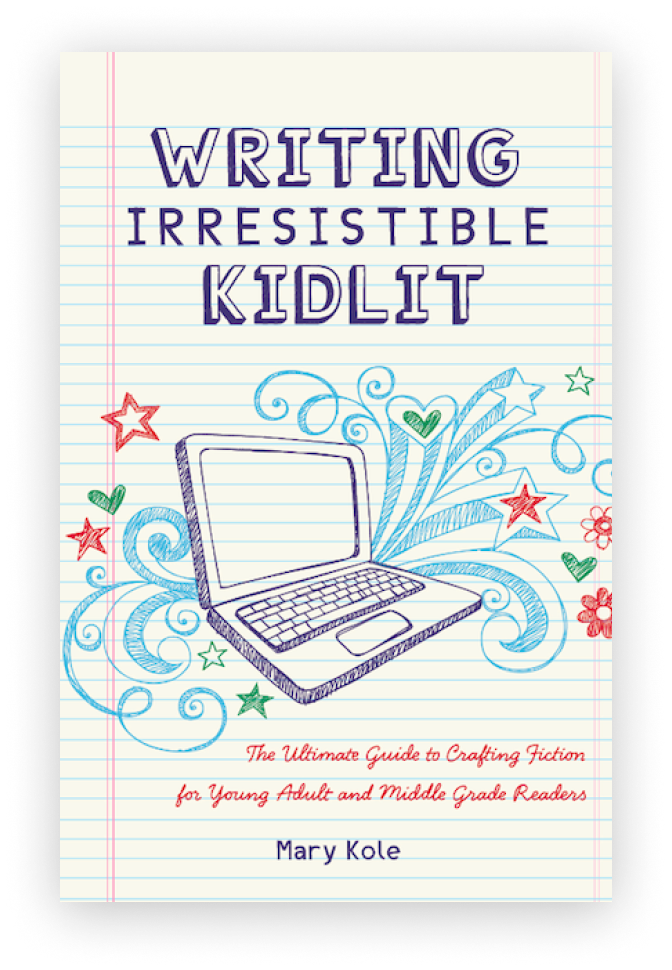How to Get a Children’s
Book Published
By Mary Kole
Mary Kole is a former literary agent, freelance editor, writing teacher, author of Writing Irresistible Kidlit, and IP developer for major publishers, with over a decade in the publishing industry.
A lot of writers who wonder how to get a children’s book published are in for quite the surprise. This dynamic market is much more complex than most aspiring storytellers give it credit for. You’re undertaking an exciting journey, and I applaud you for wanting to learn as much as you can. The children’s book market requires creativity, dedication, and hard work, and that’s even before you start to ask how to get a children’s book published. But if you are committed to creating something meaningful for young readers, then the process can be personally rewarding. In this article, I’ll provide a high-level overview of the steps involved in how to get a children’s book published—from creating the most robust idea possible to revising your project and pursuing potential publication.
How to Get a Children’s Book Published: Creating Your Idea
The first step in how to get a children’s book published involves coming up with an idea for your story. Then you have to very quickly decide what kind of “children’s book” you’re writing, as this market is incredibly segmented (for good reason). Start by thinking about what kind of story you want to tell. Brainstorm ideas that might appeal to your target audience—in very broad terms: preschool children for picture book, elementary for chapter book, middle school for middle grade, and high school for young adult—and come up with characters and plot arcs that they can relate to.
Once you have an idea in mind, flesh it out as much as possible. You can create a story outline and character sketches so that when it comes time to write your manuscript, you know exactly where you are going with it. If you’re not being intentional from the very beginning, your journey of how to get a children’s book published might be more fraught with writing rejection, and it might take longer. This is my suggestion to work smarter, not harder.
How to Get a Children’s Book Published: Writing Your Manuscript
Once you have created your idea, it's time to start writing! After all, it’s useless to ask how to get a children’s book published without the, well, book. (In most fiction publishing, you’ll need a complete manuscript before you try to pursue publication. In all of self-publishing, you need the project to be complete first.) This part of the process takes patience and discipline, as well as other mental and emotional writers tools, but also allows for plenty of creativity.
Bring your characters to life through their dialogue and actions; create vivid settings; use descriptive writing); weave a compelling plot line; explore universal themes that might resonate with readers; and don't forget about those important details like grammar, punctuation, and spelling. As you write, keep in mind that the most successful stories usually feature a lot of story conflict and tension that keeps every scene and chapter humming forward. I’ve been teaching writers how to write and how to get a children’s book published for over a decade, so there is obviously a lot more to say. But for this overview, the above ingredients are a great starting point.
How to Get a Children’s Book Published: Revising and Pursuing Publication
When your manuscript is complete (or almost complete), it's time to dive into revision. During this process, you’ll want to do a few passes yourself to make sure that everything is reading as intended. Then, it’s important to consider getting writing notes from beta readers as well as a professional editor, if that kind of investment is available to you, who may be able to offer suggestions on how best to refine your work based on their knowledge of industry standards or trends in your specific category of children’s books. Getting outside feedback and being able to constructively apply it to your work when self-editing will put rocket boosters on your pursuit of how to get a children’s book published.
Once your manuscript is finalized (though many published authors still think of things they’d change about their published work!), there are several paths available for how to get a children’s book published. Self-publishing is always an option, though your success here will depend heavily on the type of project, intended audience, and your willingness to do book marketing.
If your interest lies in how to get a children’s book published traditionally, you will need to submit query letters directly to a literary agent or publishers who specialize in the type of children’s book you’ve written. Those facets of how to get a children’s book published deserve their own focus as well, since there’s a lot to say. Whichever route you choose, make sure you do thorough research into each option beforehand so that you can make an informed decision about the path for your particular project.
Writing and publishing a children’s book can be a challenging but also incredibly rewarding experience. No matter how long it takes you or where you end up, I applaud you for wanting to learn how to get a children’s book published at this early stage. Writers who dedicate themselves to learning and growing are leaps ahead of their peers. Most importantly, enjoy this creative process as you write something unique that resonates with the next generation of readers.
For those eagle-eyed readers who are wondering just what kind of editor would write an article with the clunky phrasing of “how to get a children’s book published” over and over on her website, I applaud you for noticing that this reads awkwardly. Please note that I picked this keyword phrase on purpose, as part of my SEO (search engine optimization) strategy. If you’re curious about writer marketing techniques, check out Good Story Marketing.

Click here to purchase Writing Irresistible Kidlit, my book on fiction craft for MG and YA novels, out from Writer's Digest Books. This will show you my writing craft philosophy and give you lots of valuable advice, including tips for the novel revision process and self-editing. There are over 35 example novels cited and discussed throughout. It’s a valuable resource for any writer’s toolkit.



